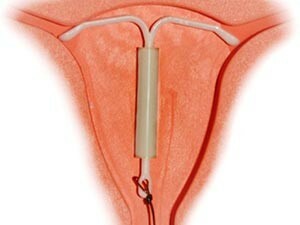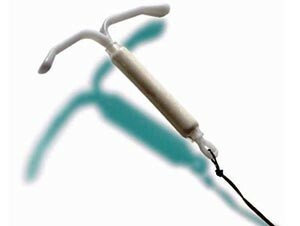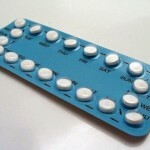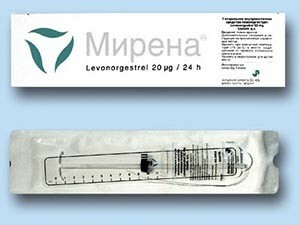By the age of menopause, women, as a rule, do not fit with brilliant health. Many have gynecological and other ailments. Menopause and itself is able to flow with such sensations that a woman for months feels broken.
Fighting this, pushing back aging, can be in many ways. Mirena with menopause is able not only to significantly improve health, but to prevent the development of many diseases, including those already available. And sometimes hormone replacement therapy without it is completely impossible.
How does the world work?
 The spiral is inserted by the doctor into the patient's uterine cavity. Mirena has the appearance of a small t-shaped device containing the hormone levonorgestrel inside. The substance belongs to the group of gestagens, that is, it has a depressing effect on the growth of the endometrium.
The spiral is inserted by the doctor into the patient's uterine cavity. Mirena has the appearance of a small t-shaped device containing the hormone levonorgestrel inside. The substance belongs to the group of gestagens, that is, it has a depressing effect on the growth of the endometrium.
Normally it develops and thickens in the middle of the cycle, loosening up. Excess estrogens can lead to abnormal growth. This is expressed by abundant secretions, the appearance of excess layers of mucous( hyperplasia) or neoplasms in the uterus.
Mirena with menopause prevents these possibilities by balancing the effect of estrogens and progestins on the reproductive organs. The spiral dispenses levonorgestrel in equal portions of 20 μg per day. The substance keeps the endometrium thin and smooth, which prevents the emergence and development of pathological processes in it, even with oral estrogen administration.
As a result, when the time comes for the replacement of the uterine mucosa in the premenopause( after all, the spiral does not interfere with the work of the ovaries), excretions are negligible or they completely disappear.

Hormonal spiral against menopausal diseases
All negative changes that cause bad health of a different nature are caused by the decrease in the number of sex hormones due to .The main among them is estrogen, which provides the majority of processes in the body.
It would seem that the solution to the problem could be his regular admission into the blood, that is, taking the appropriate drugs. But not everyone can use them without the risk of getting even more diseases, even deadly.
In addition, in menopause, too, hormonal disorders are possible, in which estrogen, although falling, but significantly prevails over progesterone. This causes the emergence or further development of:
-
 Endometrial hyperplasia. The tissues of the organ under the influence of estrogen expand, can cause cancer. The instability of hormones in menopause often leads to an increase in the symptoms of the disease. A spiral in menopause reduces the effect of estrogens on the endometrium, without interfering with its positive effects on blood vessels, heart, urinary organs, skin, bone tissue;
Endometrial hyperplasia. The tissues of the organ under the influence of estrogen expand, can cause cancer. The instability of hormones in menopause often leads to an increase in the symptoms of the disease. A spiral in menopause reduces the effect of estrogens on the endometrium, without interfering with its positive effects on blood vessels, heart, urinary organs, skin, bone tissue; - Endometriosis. The ailment is a consequence of an excess of estrogens and a deficit of progesterone, which can be preserved in menopause. Local treatment with the use of the spiral of the myrrh will prevent the aggravation of endometriosis, and contribute to its diminution. Levonorgestrel affects all cells of the uterine mucosa, as a result they do not spread further. The bleeding and pain associated with the disease cease, the risk of developing endometrial cancer is reduced;
- Myoma. The use of the miren in this neoplasm is not always possible, but only for a certain size, location. The spiral reduces the nutrition of the tumor, thanks to the presence of levonorgestrel;
- Bleeding. If the discharge occurs for unclear reasons, but it is determined that they are not of an oncological nature, a spiral inserted into the uterus with an analog of progesterone will decrease their activity and volume.

Mirena and menopause are related in such a way that the spiral significantly reduces these risks, as well as the likelihood of various inflammations in the genitals. The latter is due to the maintenance of local bacterial microflora with it.
The need to be protected and the world of
Menopause is not the only short moment in which hormones would disappear and remain at a low level. It is preceded by a gradual decrease in ovarian activity. For years, they are capable of injecting hormones into the body, which cause the reproductive system to jump-start. The inner membrane of the uterus, though not as regularly as before, is replaced. And in the ovaries the germ cell sometimes ripens.
The unpredictability of these processes in combination with the ongoing sexual life of can lead to pregnancy, when it is not needed at all. That is, there is a need to resort to contraception.
For health reasons, not all women can be protected by pills. Many of these drugs contain significant doses of hormones, which causes even greater confusion in the body, since they enter the bloodstream. Considering the fact that the memory is able to lead a woman of pre-menopausal age, and digestion does not work as qualitatively as before, the tablets will not be the best contraceptive.
A hormonal spiral in menopause is effective in this regard for 5 years, regardless of the occurrence of vomiting or diarrhea. Local influence, which renders the world, excludes the possibility of harm to other parts of the body.
The first 2 weeks after the pre-menopause of the contraceptive in premenopause should be protected in other ways, as the effect on the endometrium and cervical mucus is not instantaneous. In this case, the introduction of the spiral is performed on the eve of the menstrual period. In postmenopause, this can be done any day in the office of a gynecologist.
 We recommend reading the article about taking contraceptives with menopause. You will learn about the need to use contraceptives during menopause, their effects on the body, and this is about possible contraindications.
We recommend reading the article about taking contraceptives with menopause. You will learn about the need to use contraceptives during menopause, their effects on the body, and this is about possible contraindications.
Safe use of the world in the climacteric
When establishing a spiral, it is important for the doctor to know not only the level of hormones in the patient's blood that confirms climacteric changes and the need for its use. The woman will need to undergo a full gynecological examination and find out the condition of the mammary glands. Only in the absence of complete contraindications the remedy will be established.
 Spiral Mirena with menopause is an easier method of protection than tablets. But this does not mean that having established it, you can not go to a gynecologist for 5 years. It is at the age of premenopause that the occurrence of cysts on the ovaries is dangerous, which in some cases spiral can provoke. This neoplasm can lead to the onset of a malignant tumor on the organ, so tracking the reproductive system should remain attentive. After 3-4 months, it is necessary to check with a gynecologist, and then visit him at least once a year, if there are no complaints.
Spiral Mirena with menopause is an easier method of protection than tablets. But this does not mean that having established it, you can not go to a gynecologist for 5 years. It is at the age of premenopause that the occurrence of cysts on the ovaries is dangerous, which in some cases spiral can provoke. This neoplasm can lead to the onset of a malignant tumor on the organ, so tracking the reproductive system should remain attentive. After 3-4 months, it is necessary to check with a gynecologist, and then visit him at least once a year, if there are no complaints.
Mirena can not be used in the following cases:
- For severe vascular and cardiac damage;
- Cancer of the breast, cervix or body of the uterus, liver;
- Severe form of diabetes.
In menopause, some of these diseases occur in many women in the lung and middle reaches. If the doctor still decided that the world can be used in a climax in this case, it is necessary to control the condition of the organs that hit them.
With some ailments, the spiral should not be used, despite the existing indications for use. To prevent it from facilitating the course of menopause, in addition to those already listed, can:
- Chronic inflammatory diseases of the reproductive organs;
- Cervicitis;
- Infections of the bladder;
- Hepatitis and cirrhosis.
Mirena, used in menopause, helps to reduce its symptoms if they manifest in severe form. At the same time, adverse reactions are minimal, since there is also little in the blood of the hormone secreted by it. And yet to monitor women's health should be no less closely than before its use, and if necessary, without regret, remove the spiral in the doctor's office.
